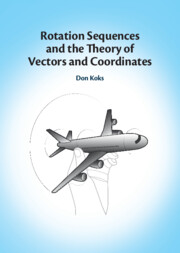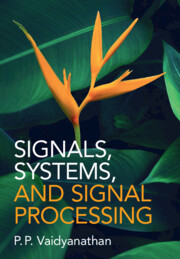Refine search
Actions for selected content:
1206 results in Computer Graphics, Image Processing and Robotics
9 - The Role of Quaternions in Rotation Theory
-
- Book:
- Rotation Sequences and the Theory of Vectors and Coordinates
- Published online:
- 17 April 2025
- Print publication:
- 24 April 2025, pp 260-302
-
- Chapter
- Export citation

Rotation Sequences and the Theory of Vectors and Coordinates
-
- Published online:
- 17 April 2025
- Print publication:
- 24 April 2025

Signals, Systems, and Signal Processing
-
- Published online:
- 29 August 2024
- Print publication:
- 13 June 2024
-
- Textbook
- Export citation
2 - What Is Human–Robot Interaction?
-
- Book:
- Human-Robot Interaction
- Published online:
- 13 June 2024
- Print publication:
- 27 June 2024, pp 6-20
-
- Chapter
- Export citation
6 - Nonverbal Interaction
-
- Book:
- Human-Robot Interaction
- Published online:
- 13 June 2024
- Print publication:
- 27 June 2024, pp 95-111
-
- Chapter
- Export citation
Frontmatter
-
- Book:
- Human-Robot Interaction
- Published online:
- 13 June 2024
- Print publication:
- 27 June 2024, pp i-iv
-
- Chapter
- Export citation
4 - Design
-
- Book:
- Human-Robot Interaction
- Published online:
- 13 June 2024
- Print publication:
- 27 June 2024, pp 57-81
-
- Chapter
- Export citation
References
-
- Book:
- Human-Robot Interaction
- Published online:
- 13 June 2024
- Print publication:
- 27 June 2024, pp 263-309
-
- Chapter
- Export citation
1 - Introduction
-
- Book:
- Human-Robot Interaction
- Published online:
- 13 June 2024
- Print publication:
- 27 June 2024, pp 1-5
-
- Chapter
- Export citation
11 - Applications
-
- Book:
- Human-Robot Interaction
- Published online:
- 13 June 2024
- Print publication:
- 27 June 2024, pp 198-228
-
- Chapter
- Export citation
Index
-
- Book:
- Human-Robot Interaction
- Published online:
- 13 June 2024
- Print publication:
- 27 June 2024, pp 310-314
-
- Chapter
- Export citation
Appendix - Answers
-
- Book:
- Human-Robot Interaction
- Published online:
- 13 June 2024
- Print publication:
- 27 June 2024, pp 259-262
-
- Chapter
- Export citation
9 - Emotion
-
- Book:
- Human-Robot Interaction
- Published online:
- 13 June 2024
- Print publication:
- 27 June 2024, pp 148-160
-
- Chapter
- Export citation
3 - How a Robot Works
-
- Book:
- Human-Robot Interaction
- Published online:
- 13 June 2024
- Print publication:
- 27 June 2024, pp 21-56
-
- Chapter
- Export citation
13 - The Future
-
- Book:
- Human-Robot Interaction
- Published online:
- 13 June 2024
- Print publication:
- 27 June 2024, pp 250-258
-
- Chapter
- Export citation
Contents
-
- Book:
- Human-Robot Interaction
- Published online:
- 13 June 2024
- Print publication:
- 27 June 2024, pp v-viii
-
- Chapter
- Export citation
7 - Verbal Interaction
-
- Book:
- Human-Robot Interaction
- Published online:
- 13 June 2024
- Print publication:
- 27 June 2024, pp 112-133
-
- Chapter
- Export citation
5 - Spatial Interaction
-
- Book:
- Human-Robot Interaction
- Published online:
- 13 June 2024
- Print publication:
- 27 June 2024, pp 82-94
-
- Chapter
- Export citation
10 - Research Methods
-
- Book:
- Human-Robot Interaction
- Published online:
- 13 June 2024
- Print publication:
- 27 June 2024, pp 161-197
-
- Chapter
- Export citation
12 - Robots in Society
-
- Book:
- Human-Robot Interaction
- Published online:
- 13 June 2024
- Print publication:
- 27 June 2024, pp 229-249
-
- Chapter
- Export citation
